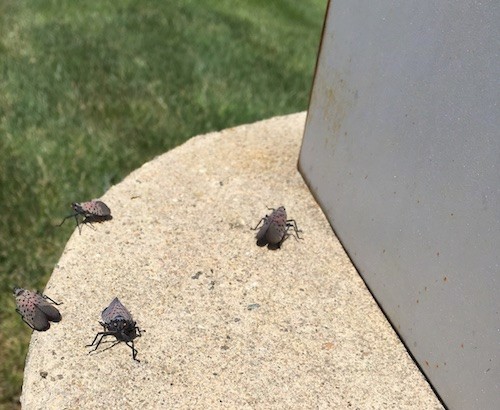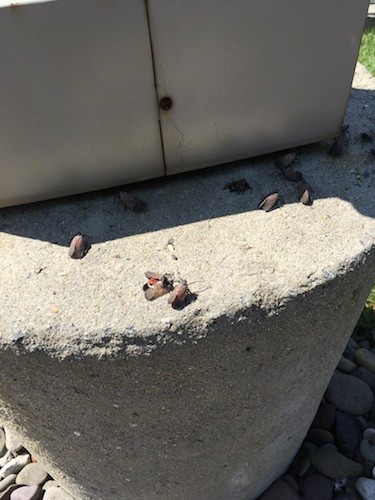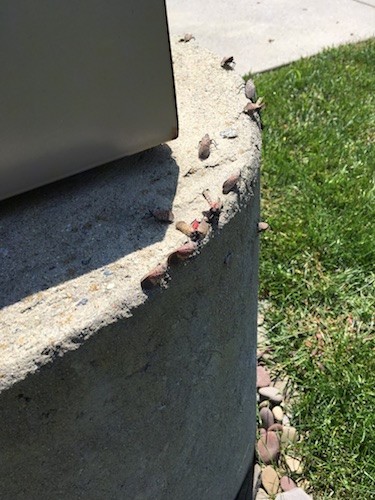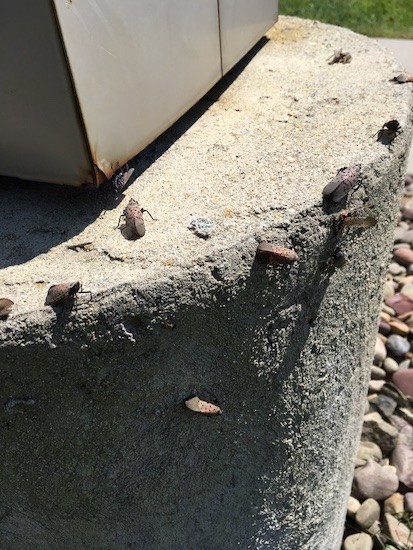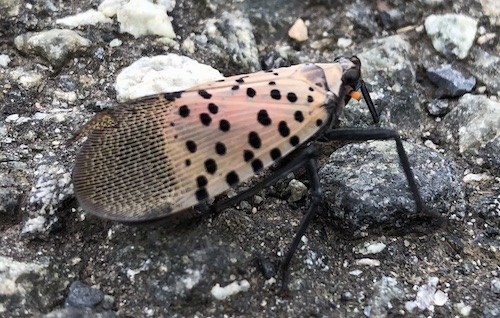
The spotted lanternfly is native to the countries India, China, and Vietnam. In years past, the spotted lanternfly has also been found in South Korea and Japan although they are not native to these countries. In September, 2014, this insect has been sighted in Berks County Pennsylvania and has since been sighted in both Delaware and New York in 2017. Various areas are putting a quarantine into effect to try and stop them from spreading. The spotted lanternfly is said to have come to America in 2014 from a stone business in Pennsylvania who regularly receives shipments from India, Brazil, and China.
The spotted lanternfly is a very destructive insect. Because these bugs have no natural predator in America, they are extremely invasive to many plants, mostly trees. Despite the two sets of wings, they cannot easily fly to the tops of trees. Instead, they are known to start from the base of the trunk and crawl their way upwards, sucking the sap from the bark, leaves, and stems. The plants develop wounds which slowly kills the tree. They are reported to go after over 70 different species of plants. Some popular plants include the tree of heaven, apple, plum, cherry, peach, and pine trees as well as grape vines and many other sweet or sappy trees.
While they can fly, they are not good at it and do not stay in the air long. If you live in an area which is under quarantine or happen to see the insect, please check your clothing, items and vehicle before leaving to prevent the spread to other areas.
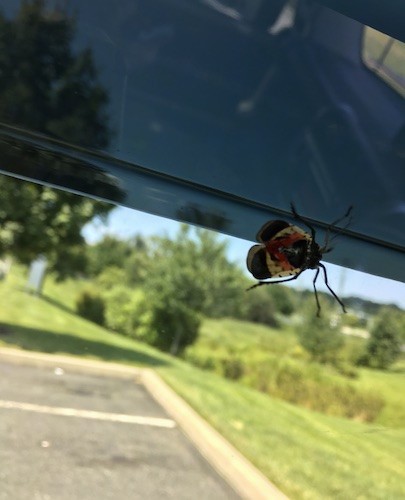
A spotted lanternfly attempting to hitch a ride inside a vehicle.
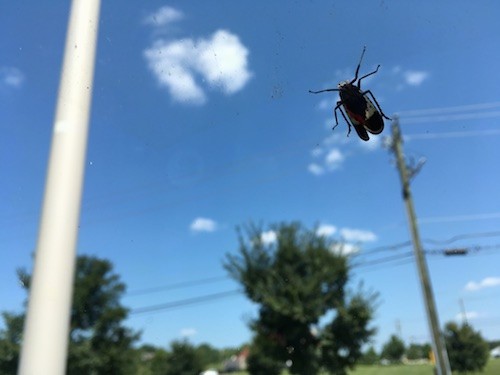
Although this insect is called the spotted lanternfly, they are not related to flies but rather to the Order Hemiptera and the Fulgoridae family. This means that they are related to bugs such as grasshoppers, cicadas, aphids, true bugs, and other planthoppers. These insects produce one generation per year. Their eggs are laid at the end of the warm months or late fall and stay on various trees throughout the winter and tend to hatch in May in Pennsylvania. When standing still, adult spotted lanternflies are about one inch long and about a half an inch wide. Their legs are black and their undersides are striped black and yellow. This insect has two sets of wings which is noticeable when flying. The first set are grey wings with noticeable small spots of a darker grey color. The second set of wings are located underneath the first and are a bright red. The red wings can be easily seen when the bug is in the air.
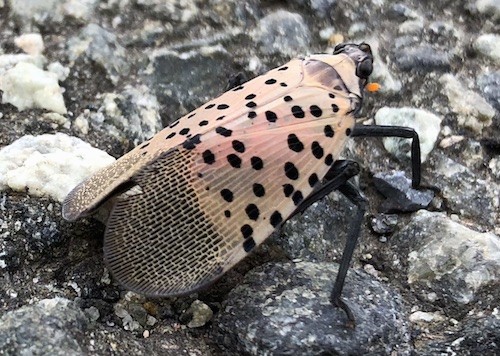
In early stages, spotted lanternfly eggs are known to look like a grey blob or goop, similar to mud spread thin on a flat or almost flat surface. Overtime, the eggs can develop a cracked appearance as they dry out. Older eggs tend to look like small brown seeds in 4-7 rows and columns. There could be as many as 30–50 eggs in one small group. The size of the egg masses are roughly around an inch long.
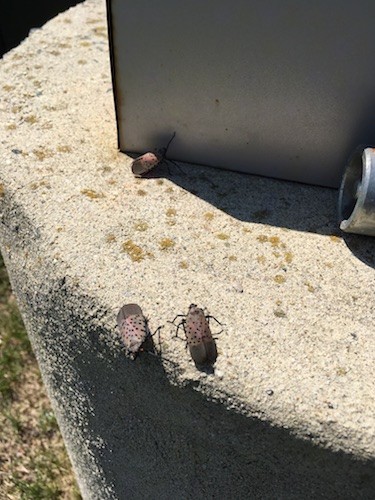
Because these bugs have no natural predator in America, they are extremely invasive to many plants, mostly trees. Despite the two sets of wings, they cannot easily fly to the tops of trees. Instead, they are known to start from the base of the trunk and crawl their way upwards, sucking the sap from the bark, leaves, and stems. The plants develop wounds which slowly kills the tree. They are reported to go after over 70 different species of plants. Some popular plants include the tree of heaven, apple, plum, cherry, peach, and pine trees as well as grape vines and many other sweet or sappy trees.
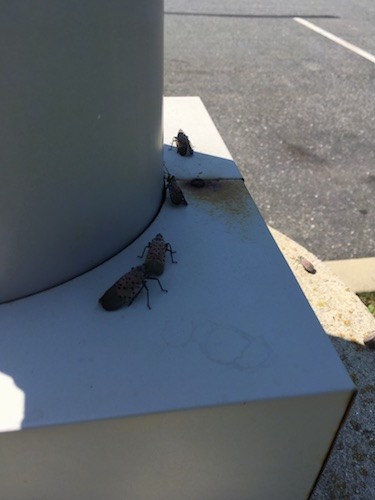
Because the spotted lanternfly is known to travel up the base of the trunk, many are able to be caught by placing a sticky band of tape around the tree. When the bugs walk on the tape, they become stuck and therefore cannot damage the tree any further. It is best to inspect for the bugs around dusk as they tend to gather in groups at the end of the day. People are being warned to check the base of trees as well as any smooth surfaces in which they may have laid eggs on. If you do see egg masses, simply scrape them off the affected area and the eggs into a double bag. The eggs could also be placed within alcohol and or hand sanitizer in order to kill the eggs. Removing the eggs from the area could be the best way to prevent an overpopulation of the insect in the future.
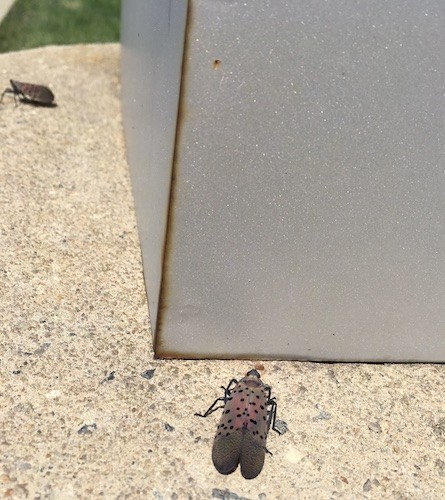
If you see a spotted lanternfly, please take a moment to call the Spotted Lanternfly Hotline at 1-888-4BAD-FLY also known as 1-888-422-3359. It only takes a few moments to report about the sighting.
If you find a Spotted Lanternfly at any stage of its life, you can turn it into the Pennsylvania Department of Agriculture’s Entomology lab. They will verify the insect and dispose of it properly.
